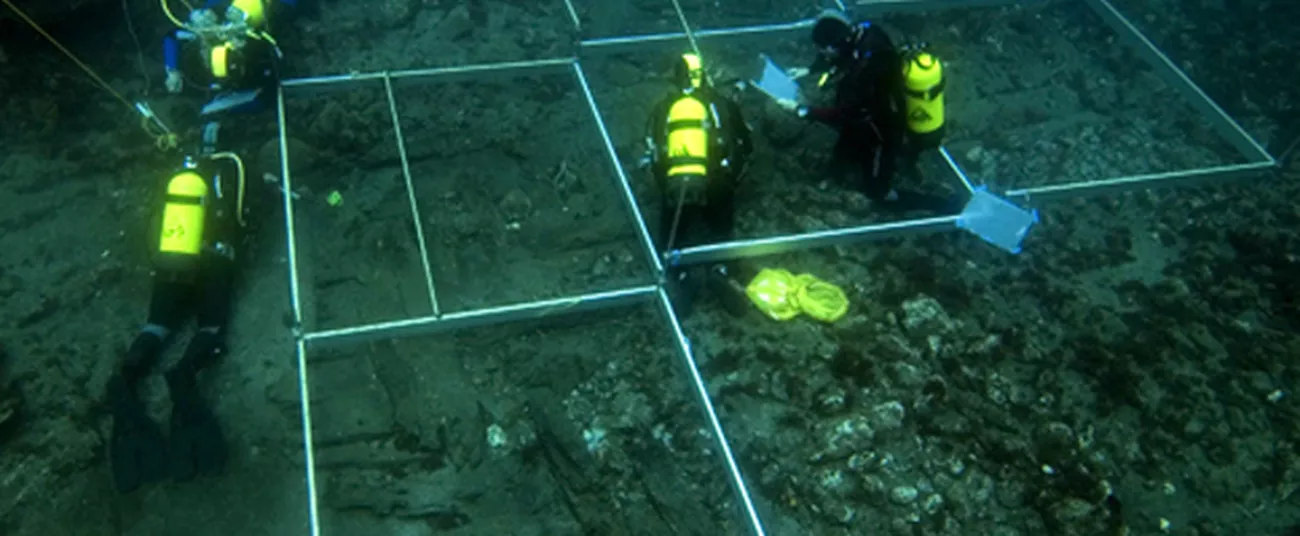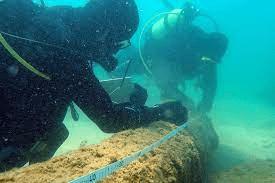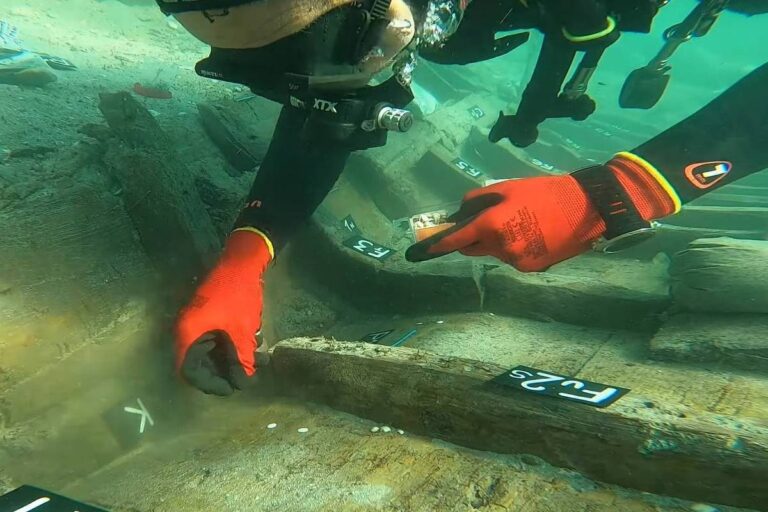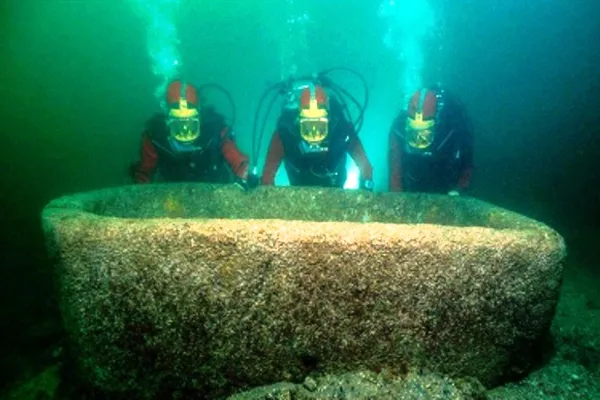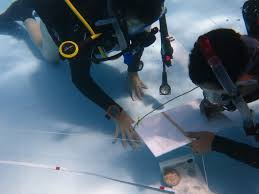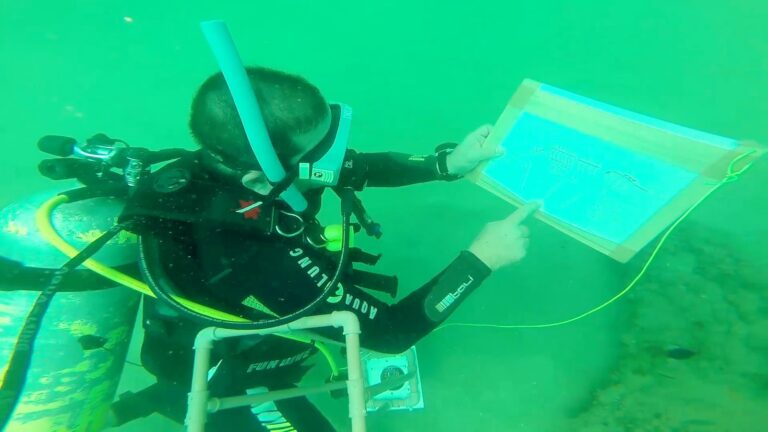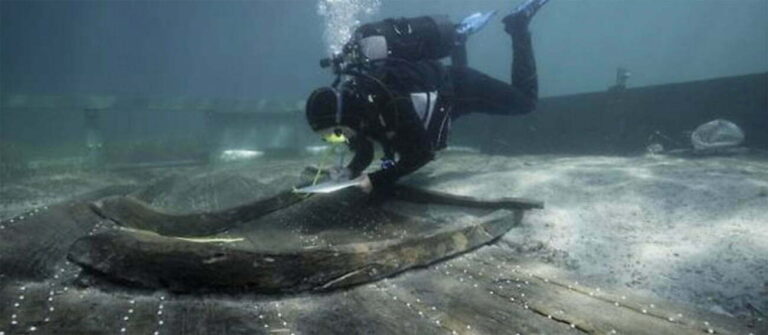Advanced Techniques and Technology in Underwater Archaeology
Underwater archaeology is a fascinating field that combines the exploration of history with the challenges of working in a unique and often hidden environment. It involves the study and excavation of submerged archaeological sites in lakes, rivers, and oceans, providing valuable insights into past civilizations and maritime culture. The importance of studying underwater sites cannot be understated, as they hold a wealth of information about our shared human history.
Traditional techniques in underwater archaeology have relied on diving expeditions and manual excavation methods. However, advancements in technology have revolutionized the field, allowing archaeologists to uncover and document underwater sites with unprecedented precision and accuracy. These advanced techniques not only enhance our understanding of the past, but also contribute to the preservation and protection of these fragile underwater cultural heritage.
Table of Contents
Evolution of Underwater Archaeology Techniques
As the field of underwater archaeology continues to advance, advanced techniques and technology play a crucial role in uncovering and understanding the secrets hidden beneath the depths. Over the years, traditional methods have paved the way for cutting-edge tools and innovative approaches, revolutionizing the way we explore and study underwater sites.
1. Remote Sensing Technologies
In the evolution of underwater archaeology techniques, remote sensing technologies have become indispensable. Sophisticated sonar systems, including multi-beam echosounders and side-scan sonar, allow archaeologists to create detailed maps of the underwater terrain, revealing submerged structures and artifacts that were once inaccessible. Additionally, sub-bottom profilers help in identifying buried features, providing invaluable information on ancient civilizations.
2. Diving Technologies
Advancements in diving technologies have significantly enhanced underwater archaeological exploration. The development of specialized diving equipment has opened up new possibilities for researchers to conduct in-depth surveys and recover artifacts with precision. Miniaturized underwater cameras allow for clearer documentation and detailed analysis, while the use of specialized breathing gas mixtures extends dive times and improves safety for divers.
3. ROVs and AUVs
The introduction of Remote Operated Vehicles (ROVs) and Autonomous Underwater Vehicles (AUVs) has revolutionized the field of underwater archaeology. These unmanned vehicles equipped with advanced sensors and imaging systems can navigate underwater environments with remarkable precision and gather valuable data without risking human lives. ROVs have proven particularly useful in exploring deep-sea sites and in conducting targeted surveys, while AUVs enable extensive data collection over large areas.
As technology continues its rapid advancement, a new era of underwater archaeology techniques is emerging, utilizing cutting-edge tools and technologies to unravel the mysteries of the past.
4. Photogrammetry
One such technology is photogrammetry, which allows for the creation of detailed 3D reconstructions of underwater sites. By capturing multiple high-resolution images from different angles, software algorithms can stitch them together to create accurate models. This technique offers numerous benefits, such as preserving virtual replicas of fragile sites and making them accessible to a wider audience. However, it also presents challenges, including the need for clear visibility underwater and precise calibration of cameras.
5. Underwater LiDAR Scanning
Underwater LiDAR scanning is another cutting-edge tool that has revolutionized underwater archaeology. LiDAR technology uses laser beams to create detailed three-dimensional maps of underwater sites. It enables archaeologists to detect submerged structures with unparalleled accuracy and detail, even in murky waters. The advancements in LiDAR scanning have provided new opportunities for underwater archaeologists to explore submerged landscapes and underwater cultural heritage.
6. DNA Analysis
DNA analysis has emerged as a powerful tool in underwater archaeology, allowing researchers to identify artifacts and uncover valuable information about their origin and age. By extracting DNA samples from submerged artifacts, scientists can trace their historical context and determine their archaeological significance. Case studies have demonstrated the potential of DNA analysis in unraveling mysteries surrounding underwater archaeological sites and enhancing our understanding of ancient civilizations.
In conclusion, the evolution of underwater archaeology techniques has paved the way for innovative approaches and advanced technologies. From remote sensing technologies and diving advancements to cutting-edge tools such as photogrammetry, underwater LiDAR scanning, and DNA analysis, these techniques are invaluable in uncovering hidden treasures from the depths. As we continue to push the boundaries of exploration, the importance of continued innovation in underwater archaeology cannot be overstated. With the potential for future developments and advancements, this field holds exciting prospects for discovering and preserving our ancient heritage.
Remote Sensing Technologies
Remote sensing technologies have revolutionized the field of underwater archaeology, allowing researchers to explore and document submerged sites with unprecedented precision and detail. Sonar systems have played a crucial role in this advancement, enabling researchers to map the underwater topography and identify potential archaeological sites. By emitting sound waves and measuring their echo, sonar systems provide valuable information about the depth, shape, and composition of the underwater environment.
One important type of sonar technology is multi-beam echosounders, which emit a fan-shaped beam of sound waves to generate high-resolution images of the seafloor. This advanced technique allows researchers to accurately map underwater topography and detect submerged features that may indicate the presence of archaeological remains. Side-scan sonar is another powerful tool in underwater archaeology, providing detailed imagery of the seafloor and identifying anomalies that could be potential artifacts or structures.
In addition to sonar technologies, sub-bottom profilers are used to investigate the layers beneath the seafloor. By emitting low-frequency sound waves and recording their reflections, sub-bottom profilers can reveal buried archaeological features, such as shipwrecks or ancient settlements. These remote sensing technologies have significantly improved the efficiency and effectiveness of underwater archaeological surveys, leading to the discovery of numerous historically significant sites.
The integration of remote sensing technologies with other advanced techniques, such as photogrammetry and DNA analysis, has further enhanced the field of underwater archaeology. By combining data from sonar systems with high-resolution imagery obtained through photogrammetry, researchers can create detailed 3D reconstructions of underwater sites. This allows for better analysis and interpretation of the archaeological remains, providing valuable insights into past civilizations.
In conclusion, remote sensing technologies have revolutionized underwater archaeology, enabling researchers to explore and document submerged sites with unprecedented accuracy. From sonar systems, such as multi-beam echosounders and side-scan sonar, to sub-bottom profilers, these advanced techniques have allowed for the identification and mapping of archaeological remains. The integration of these remote sensing technologies with other cutting-edge tools, like photogrammetry and DNA analysis, has further advanced our understanding of the past. As technology continues to evolve, the field of underwater archaeology will undoubtedly benefit from continued innovation and potential future developments.
Diving Technologies
Diving technologies have played a crucial role in the advancement of underwater archaeology, allowing researchers to explore and document underwater sites with precision and efficiency. Over the years, there have been remarkable developments in diving equipment, enabling archaeologists to access previously inaccessible depths.
One key innovation in diving technology has been the development of miniaturized underwater cameras, which have revolutionized the visual documentation of underwater sites. These cameras are designed to withstand the harsh conditions of the underwater environment and capture high-resolution images and videos. With the help of these cameras, archaeologists can now accurately record and analyze submerged artifacts and structures, providing invaluable insights into our maritime past.
Another significant advancement in diving technologies is the development of breathing gas mixtures. Traditional diving methods relied on compressed air, which limited divers to relatively shallow depths due to the risk of decompression sickness. However, the use of nitrox, trimix, and heliox breathing gas mixtures has extended the diving capabilities of archaeologists. These mixtures allow for longer dives at greater depths, enhancing the exploration and documentation of underwater archaeological sites.
It is important to note that the development of diving technologies is not limited to equipment alone. Dive planning and safety procedures have also undergone significant improvements. Diving computers and underwater navigation systems aid divers in managing their dives more effectively, ensuring their safety and minimizing potential risks.
Overall, the continuous development of diving technologies has been instrumental in expanding our understanding of underwater archaeological sites. Through the utilization of miniaturized underwater cameras, advanced breathing gas mixtures, and enhanced safety measures, archaeologists can explore previously uncharted depths, discovering and preserving our submerged cultural heritage. With ongoing advancements in diving technologies, the field of underwater archaeology is poised for exciting future possibilities.
ROVs and AUVs
Remote Operated Vehicles (ROVs) and Autonomous Underwater Vehicles (AUVs) have revolutionized underwater archaeology, providing researchers with advanced tools to explore and document submerged sites. ROVs are operated remotely by human operators, allowing them to navigate and collect data in real-time. These vehicles are equipped with cameras, sensors, and manipulator arms, enabling them to capture detailed images and videos of underwater structures, artifacts, and the surrounding environment.
The applications of ROVs in underwater archaeology are vast. These remotely controlled vehicles can reach depths that are inaccessible to divers, making them essential for exploring deep sites and dangerous areas. ROVs can carry out extensive surveys and mapping to create accurate 3D models of underwater sites. By collecting high-resolution imagery and data, researchers can study artifacts and structures in great detail without the risk of disturbing the delicate underwater environment.
One of the major advantages of ROVs is their ability to operate for extended periods, allowing researchers to gather comprehensive data. They can also withstand harsh conditions, including strong currents, deep-sea pressures, and low visibility. However, ROVs also have limitations. Their operation is dependent on cables, which restrict the distance they can travel from the surface support vessel. Moreover, the use of ROVs requires skilled operators and can be costly, making them less accessible for smaller research projects.
Autonomous Underwater Vehicles (AUVs) have emerged as a complementary technology in underwater archaeology. Unlike ROVs, AUVs operate autonomously, following pre-programmed routes. These vehicles are equipped with advanced navigation systems, sensors, and acoustic imaging devices, allowing them to collect data independently. AUVs are often used for large-scale surveys and to cover expansive areas quickly and efficiently.
AUVs play a crucial role in underwater archaeology by supporting research efforts in remote locations and providing high-resolution data for mapping and site identification. With their ability to operate without human intervention, AUVs can be deployed for long periods, collecting vast amounts of data, and conserving resources. However, the lack of real-time control and limited maneuverability are some of the challenges associated with AUVs.
In conclusion, the use of ROVs and AUVs has significantly enhanced underwater archaeology capabilities. These advanced technologies offer researchers the ability to explore and document submerged sites with precision and efficiency. While ROVs provide real-time control and maneuverability, AUVs offer autonomy and extensive survey capabilities. By leveraging the advantages of both technologies, underwater archaeologists can continue to uncover hidden treasures and unravel the mysteries of the past beneath the waves.
Photogrammetry
Photogrammetry is an innovative technique that has revolutionized the field of underwater archaeology. It involves the process of capturing and analyzing underwater photographs in order to create accurate 3D reconstructions of submerged sites. Through the use of specialized software and algorithms, photogrammetry allows archaeologists to create detailed and realistic virtual models of underwater structures, artifacts, and landscapes.
The benefits of using photogrammetry in underwater archaeology are numerous. Firstly, it provides a non-invasive method of documentation, as the photographs can be taken from a distance without disturbing the artifacts or the surrounding environment. This is particularly important when dealing with fragile or delicate remains that could be damaged by physical contact.
Additionally, photogrammetry enables archaeologists to have a permanent record of underwater sites, as it allows for the creation of highly accurate and detailed digital archives. These can be used for further research, analysis, and even public outreach and education. By providing an immersive experience through virtual reconstructions, photogrammetry brings history to life and allows a wider audience to engage with the underwater cultural heritage.
However, like any technique, photogrammetry also poses its own challenges. One of the major obstacles is the need for optimal visibility conditions underwater, as water turbidity or poor lighting can negatively impact the quality of the photographs and subsequent reconstructions. In addition, the process requires precision and technical expertise, as the alignment and stitching of multiple images must be done accurately to ensure accurate measurements and representations.
Despite these challenges, the use of photogrammetry in underwater archaeology continues to advance the field, unlocking new possibilities for exploration and interpretation. It has the potential to revolutionize the study of submerged cultural heritage, offering a non-invasive and highly accurate method of documenting and preserving underwater sites for future generations. As technology continues to improve, it is likely that photogrammetry will play an increasingly significant role in the future of underwater archaeology, enabling archaeologists to uncover even more secrets hidden beneath the depths.
Underwater LiDAR Scanning
Overview of LiDAR Technology
LiDAR, which stands for Light Detection and Ranging, is a cutting-edge technology that uses laser light to measure distances and create detailed 3D maps of the environment. In the context of underwater archaeology, LiDAR scanning has proven to be a game-changer for researchers and archaeologists. By emitting laser pulses and measuring their return time, LiDAR scanners can create highly accurate maps of underwater sites, even in challenging conditions such as low visibility or complex topography.
Applications of LiDAR Scanning in Underwater Archaeology
The applications of LiDAR scanning in underwater archaeology are vast and varied. One of the main uses is the discovery and mapping of submerged landscapes. With LiDAR technology, researchers can identify potential archaeological sites, even those located beneath several meters of water. This capability has allowed archaeologists to discover previously unknown ancient settlements, shipwrecks, and even entire lost cities.
LiDAR scanning also plays a crucial role in site documentation and visualization. By capturing precise topographic data, LiDAR allows archaeologists to create detailed digital reconstructions of underwater sites. These visualizations provide a comprehensive understanding of the site’s layout, enabling researchers to analyze and interpret the data more effectively.
Advancements and Future Possibilities
As technology continues to evolve, so does the potential of LiDAR scanning in underwater archaeology. Recent advancements include the development of mobile and smaller-scale LiDAR systems, allowing researchers to access and explore previously inaccessible areas. Additionally, improvements in data processing and analysis techniques have made it possible to extract even more detailed information from LiDAR datasets.
Looking to the future, there are several exciting possibilities for LiDAR scanning in underwater archaeology. One area of interest is the integration of LiDAR data with other remote sensing technologies, such as sonar and photogrammetry. By combining data from multiple sources, archaeologists can obtain a more comprehensive understanding of submerged sites, unlocking new insights into the past.
In conclusion, LiDAR scanning has revolutionized underwater archaeology by providing accurate and detailed information about submerged sites. Its applications, ranging from site discovery to visualization, have significantly enhanced our understanding of the underwater world. With ongoing advancements and the integration of other technologies, the future possibilities of LiDAR scanning in underwater archaeology are incredibly promising.
DNA Analysis in Underwater Archaeology
DNA analysis has emerged as a cutting-edge technique in underwater archaeology, revolutionizing our understanding of artifacts and providing valuable insights into their origin and age. The utilization of DNA analysis enables researchers to unlock a wealth of information, ranging from the identification of artifacts to unraveling the stories behind their creation and use.
Using DNA analysis to identify artifacts has proven to be a powerful tool in underwater archaeology. By extracting DNA samples from artifacts recovered from underwater sites, researchers can determine the species they originated from and shed light on their purpose and significance. This information helps build a more comprehensive picture of ancient societies and their interactions with the marine environment.
In addition to identifying artifacts, DNA analysis plays a crucial role in determining the origin and age of artifacts. By examining the genetic markers present in the DNA, researchers can trace the geographic origins of artifacts and understand the trade networks that existed in ancient times. Furthermore, DNA analysis can provide valuable insights into the age of artifacts, helping archaeologists establish timelines and chronologies with greater precision.
Several case studies have demonstrated the power of DNA analysis in underwater archaeology. For example, DNA analysis has been used to reveal the origin of ancient bones found in underwater archaeological sites, providing evidence of past human migrations and interactions. In another case, DNA analysis helped identify the species of wooden artifacts recovered from shipwrecks, shedding light on the materials used in their construction and the trade routes they traveled.
Despite its immense potential, DNA analysis in underwater archaeology does come with its challenges. The underwater environment poses various difficulties for DNA preservation, such as the degradation of genetic material over time. Therefore, researchers must develop innovative techniques for extracting and analyzing DNA from waterlogged artifacts.
In conclusion, DNA analysis is a powerful tool that is transforming our understanding of underwater archaeology. With its ability to identify artifacts, determine their origin and age, and reveal fascinating insights into ancient societies, DNA analysis has opened up new avenues of research and expanded our knowledge of our maritime heritage. Continued advancements in this field hold great promise for unraveling the mysteries of the past and preserving our cultural heritage for future generations.
Challenges and Considerations
Underwater archaeology, with its focus on uncovering the mysteries of the past submerged beneath our oceans and lakes, is an exciting field that offers unique challenges and considerations. As we push the boundaries of what is possible through advanced techniques and technology, it is important to also address the obstacles we face in the preservation and ethical practices of this scientific endeavor.
One of the primary challenges in underwater archaeology is the conservation and preservation of artifacts. Preserving underwater artifacts requires unique approaches due to the corrosive effects of saltwater and the delicate nature of many artifacts. Researchers have developed innovative conservation techniques, such as electrolytic reduction and freeze-drying, to slow down the degradation process. However, balancing access to artifacts for research and public education with conservation efforts is a constant challenge.
Legal and ethical considerations also play a significant role in underwater archaeology. Laws and regulations surrounding underwater archaeology vary between countries and can be complex to navigate. Protecting cultural heritage is a crucial aspect of this field, and archaeologists must work closely with government bodies and local communities to ensure the preservation and respect of underwater sites. Collaboration with indigenous groups is particularly important to incorporate traditional knowledge and perspectives.
Another consideration in underwater archaeology is the environmental impact of our research and exploration. As climate change affects sea levels and water quality, underwater sites are at risk of damage or destruction. Researchers must implement mitigation measures to protect sites, such as installing artificial reefs to minimize erosion and monitoring water quality for signs of contamination. Additionally, adopting sustainable practices in underwater archaeology, such as promoting responsible diving and utilizing non-invasive techniques, can help minimize our carbon footprint and reduce further damage to these fragile environments.
In conclusion, while advanced techniques and technology in underwater archaeology offer unprecedented opportunities for discovery, there are several challenges and considerations that must be addressed. From preserving underwater artifacts to navigating legal and ethical boundaries, and from mitigating the environmental impact to promoting sustainability, a holistic approach is necessary to ensure the longevity and integrity of this fascinating field. By continuing to innovate and collaborate, we can overcome these challenges and unlock the secrets of our underwater past for future generations to appreciate and learn from.
Conservation and Preservation of Artifacts
Underwater archaeology presents unique challenges when it comes to the conservation and preservation of artifacts. The harsh underwater environment, with its constant exposure to saltwater and fluctuating temperatures, can cause significant damage to artifacts if not properly cared for. Preservation efforts must take into account these challenges and find innovative techniques to ensure the long-term survival of these important historical treasures.
Preserving underwater artifacts requires specialized techniques that go beyond traditional methods used on land. One of the biggest challenges is preventing the corrosion and degradation of artifacts caused by exposure to water and marine organisms. The high salt content in seawater can accelerate the deterioration process, making it essential to find ways to remove or neutralize the salts and prevent further damage. Advanced conservation technologies, such as desalination methods and corrosion inhibitors, have been developed to mitigate these challenges.
In addition to corrosion, underwater artifacts can also be vulnerable to physical damage. Recovering artifacts from the seabed can be a delicate process, as they may be fragile or in a state of disintegration. Innovative conservation techniques, such as the use of underwater 3D printing, have emerged to replicate and reconstruct damaged artifacts. This allows for their preservation and display without the risk of further deterioration.
However, a delicate balance must be struck between access to artifacts for research purposes and the preservation efforts necessary to protect them. The accessibility of underwater sites and artifacts poses a significant challenge. Limitations on diving time, environmental impact, and the need for controlled access can make it difficult for researchers to fully explore and study these archaeological treasures. Finding the right balance between providing access for research and protecting the artifacts from damage requires careful planning and collaboration between archaeologists, conservationists, and governing bodies.
In conclusion, the conservation and preservation of underwater artifacts in underwater archaeology is a complex task that requires innovative techniques and a careful balance between access and preservation. Navigating the unique challenges posed by the underwater environment and finding ways to mitigate the effects of corrosion and physical damage are essential for the long-term survival of these historical treasures. Continued research and development in conservation technologies, along with collaboration and adherence to ethical guidelines, will ensure that future generations can continue to learn from and appreciate these valuable artifacts.
Legal and Ethical Considerations
Underwater archaeology is not only a fascinating field of study but also one that comes with its own set of legal and ethical considerations. As advancements in technology continue to push the boundaries of what is possible in terms of exploration and artifact recovery, it becomes increasingly important to navigate the legal frameworks and ensure the protection of cultural heritage.
One of the key aspects in underwater archaeology is understanding the laws and regulations surrounding the field. Different countries may have their own specific legislation governing underwater exploration and excavation. These laws are designed to protect underwater cultural heritage and ensure responsible and ethical practices. Compliance with these regulations is vital to avoid legal repercussions and to ensure that the artifacts are preserved in their historical and cultural context.
Protection of cultural heritage is another crucial consideration in underwater archaeology. These sites hold immense historical, cultural, and scientific value. Therefore, it is essential to prioritize the preservation and conservation of artifacts and underwater sites. Innovative conservation techniques are constantly being developed to combat the unique challenges posed by underwater preservation, such as corrosion and sedimentation. By safeguarding the integrity of these sites, we can continue to understand and learn from our shared cultural past.
Collaboration with local communities and indigenous groups is an essential aspect of conducting underwater archaeological research. Recognizing and respecting the rights and interests of these communities is of utmost importance. Engaging with local stakeholders can foster a sense of ownership and stewardship over the cultural heritage, ensuring that the artifacts are properly displayed and interpreted. This collaboration can also provide valuable insights and local knowledge that can contribute to a more comprehensive understanding of the history and significance of the underwater sites.
By navigating the legal framework, protecting cultural heritage, and collaborating with local communities, underwater archaeologists can foster a responsible and sustainable approach to their work. These considerations not only ensure compliance with laws and regulations but also promote an ethical and respectful approach to exploring and interpreting our shared past. As the field of underwater archaeology continues to evolve, it is important to remain mindful of these legal and ethical aspects and actively work towards their preservation and protection.
Environmental Impact
Underwater archaeology is not immune to the challenges posed by environmental impacts, especially the effects of climate change on underwater sites. The effects of climate change can include rising sea levels, increased storm activity, and changing ocean temperatures and acidification. These factors can all have detrimental effects on underwater archaeological sites, leading to erosion, displacement of artifacts, and even the destruction of entire sites.
To mitigate the environmental impact and protect these valuable sites, mitigation measures must be implemented. One approach is the creation of marine protected areas to safeguard underwater archaeological sites from development or destructive activities. These protected areas can help regulate human activity and provide a safe haven for fragile ecosystems and historical artifacts.
Another important consideration is the adoption of sustainable practices in underwater archaeology. This involves using methods and technologies that minimize the disturbance to the environment and promote the long-term preservation of underwater sites. For example, researchers can employ non-destructive surveying techniques like photogrammetry or LiDAR scanning to gather data without physically disturbing the site.
Additionally, underwater archaeologists can collaborate with scientists and environmental experts to develop strategies that minimize their impact on the ecosystem. This could include reducing the use of harmful chemicals, implementing proper waste management systems, and carefully monitoring the ecological health of the surrounding area.
In conclusion, the environmental impact on underwater archaeological sites is a significant concern that must not be overlooked. Climate change and other factors can pose serious threats to these sites, but through the implementation of mitigation measures and sustainable practices, we can ensure their preservation for future generations. It is crucial that underwater archaeologists continue to prioritize their environmental responsibility and work alongside other experts to protect these unique and valuable cultural heritage sites.
Conclusion
Throughout this blog post, we have delved into the fascinating world of advanced techniques and technology in underwater archaeology. We started our journey by understanding the concept of underwater archaeology and its significance in uncovering the mysteries of the past. We also gained insights into the traditional techniques that have been used for centuries to explore underwater sites.
However, as technology has advanced, so has our ability to explore the depths of the ocean. We delved into the evolution of underwater archaeology techniques, and three key areas stood out: remote sensing technologies, diving technologies, and ROVs and AUVs. These innovations have revolutionized our ability to navigate and explore underwater sites, opening up new possibilities for research and discovery.
But the cutting-edge tools and technologies don’t stop there. Two groundbreaking techniques that have emerged in recent years are photogrammetry and underwater LiDAR scanning. These methods allow us to create detailed 3D reconstructions of underwater sites and capture high-resolution images, providing a wealth of data for analysis and interpretation. Additionally, the use of DNA analysis has proven invaluable in identifying artifacts and shedding light on their origin and age.
As with any field, underwater archaeology faces its fair share of challenges. One of the most pressing concerns is the conservation and preservation of artifacts. The unique underwater environment poses significant difficulties in maintaining and protecting these delicate objects. Thankfully, innovative conservation techniques are being developed, striking a careful balance between accessibility and preservation efforts.
We must also consider the legal and ethical considerations surrounding underwater archaeology. Laws and regulations are in place to protect cultural heritage, while collaboration with local communities and indigenous groups ensures that the findings are respectfully handled and shared.
Furthermore, the environmental impact of climate change on underwater sites cannot be ignored. Rising sea levels, ocean acidification, and changing currents all pose threats to these invaluable historical resources. Mitigation measures and sustainable practices must be implemented to ensure their long-term preservation.
In conclusion, the advanced techniques and technologies discussed in this blog post have greatly enhanced our understanding and exploration of underwater archaeology. The continued innovation in this field is crucial for unlocking the secrets hidden beneath the waves. As we look to the future, we can anticipate exciting developments, such as advancements in underwater robotics, further improvements in imaging technologies, and the integration of artificial intelligence in data analysis. By embracing these advancements and addressing the challenges, we can pave the way for exciting discoveries and a deeper appreciation of our shared human history.

